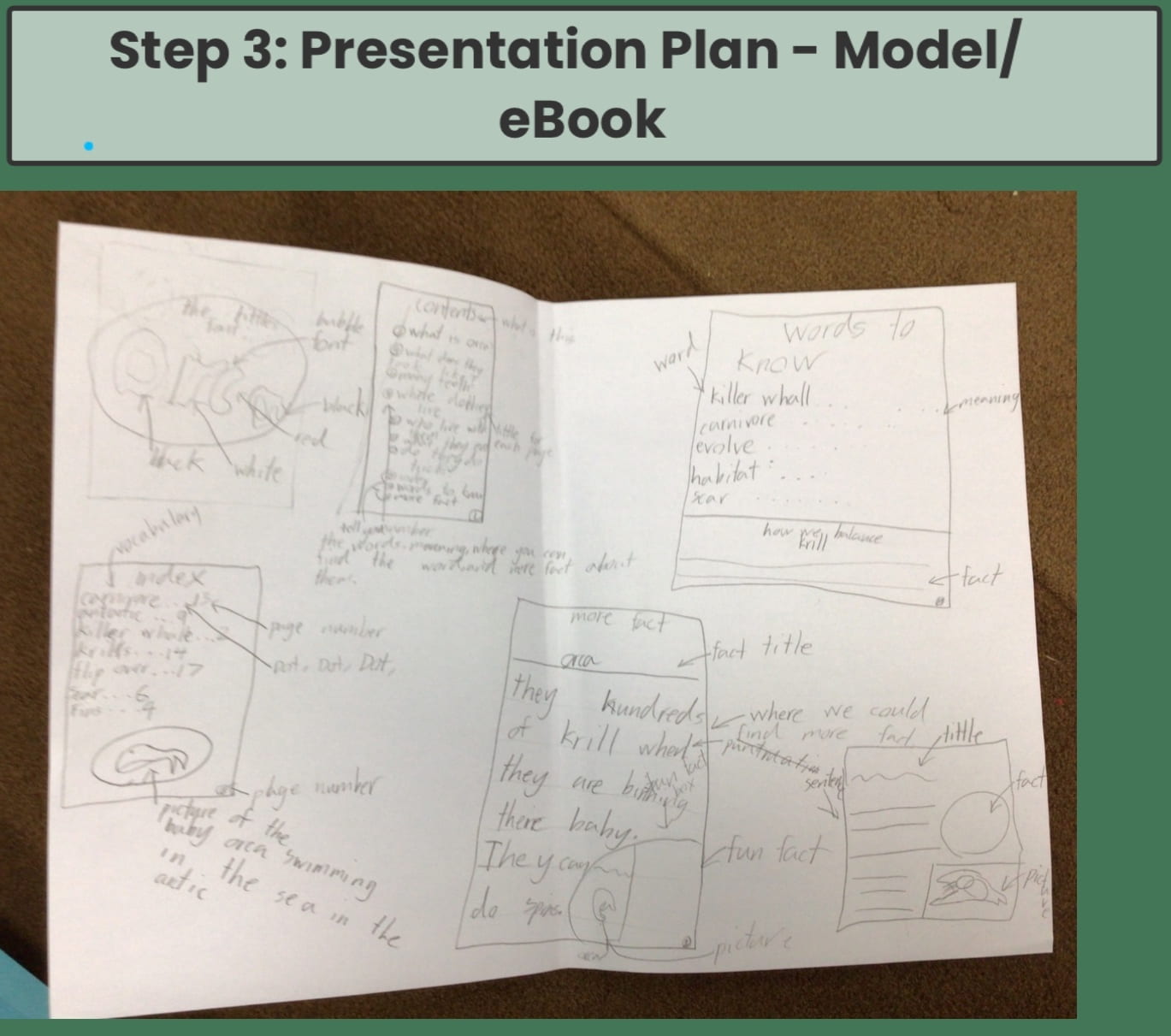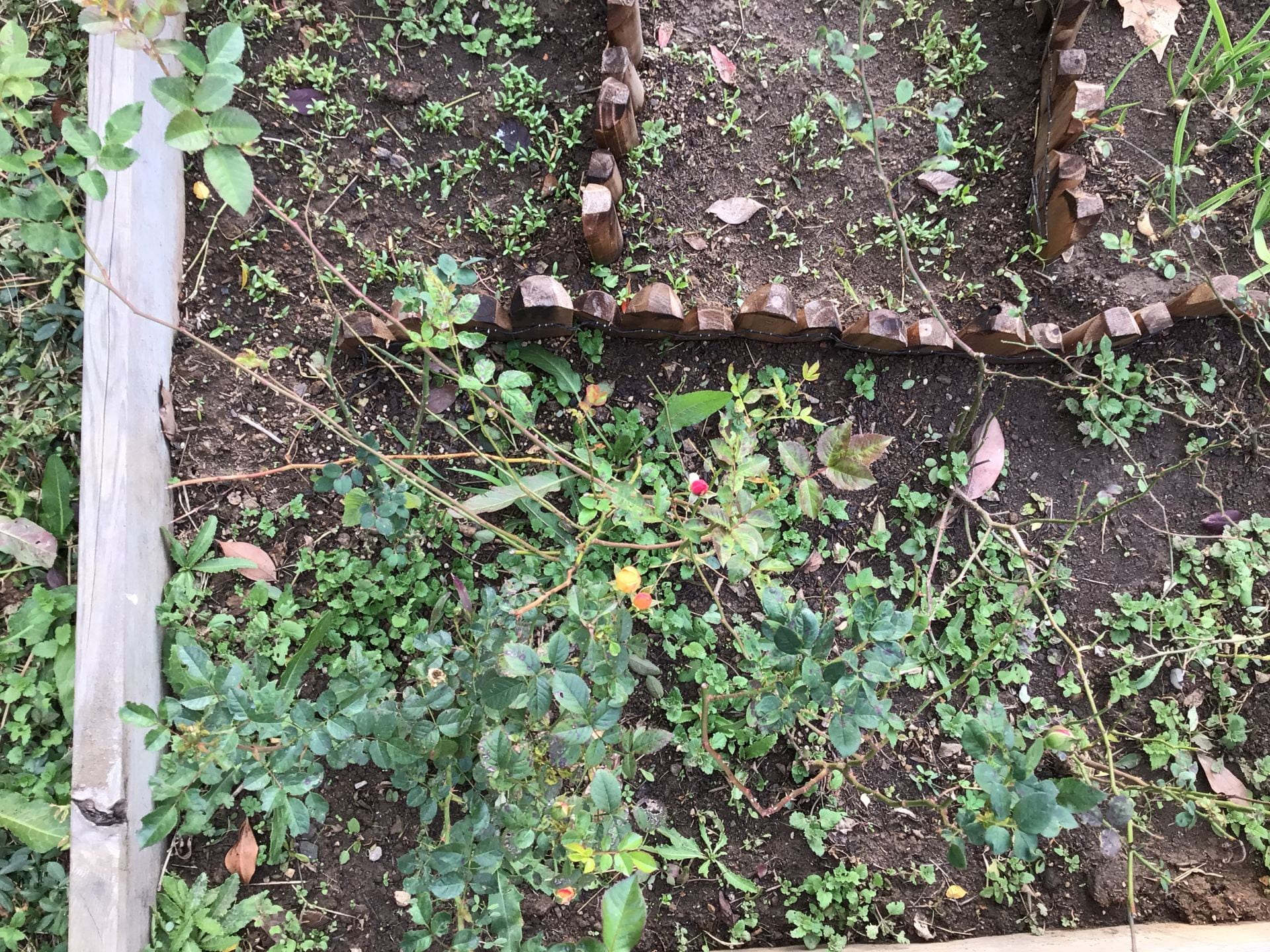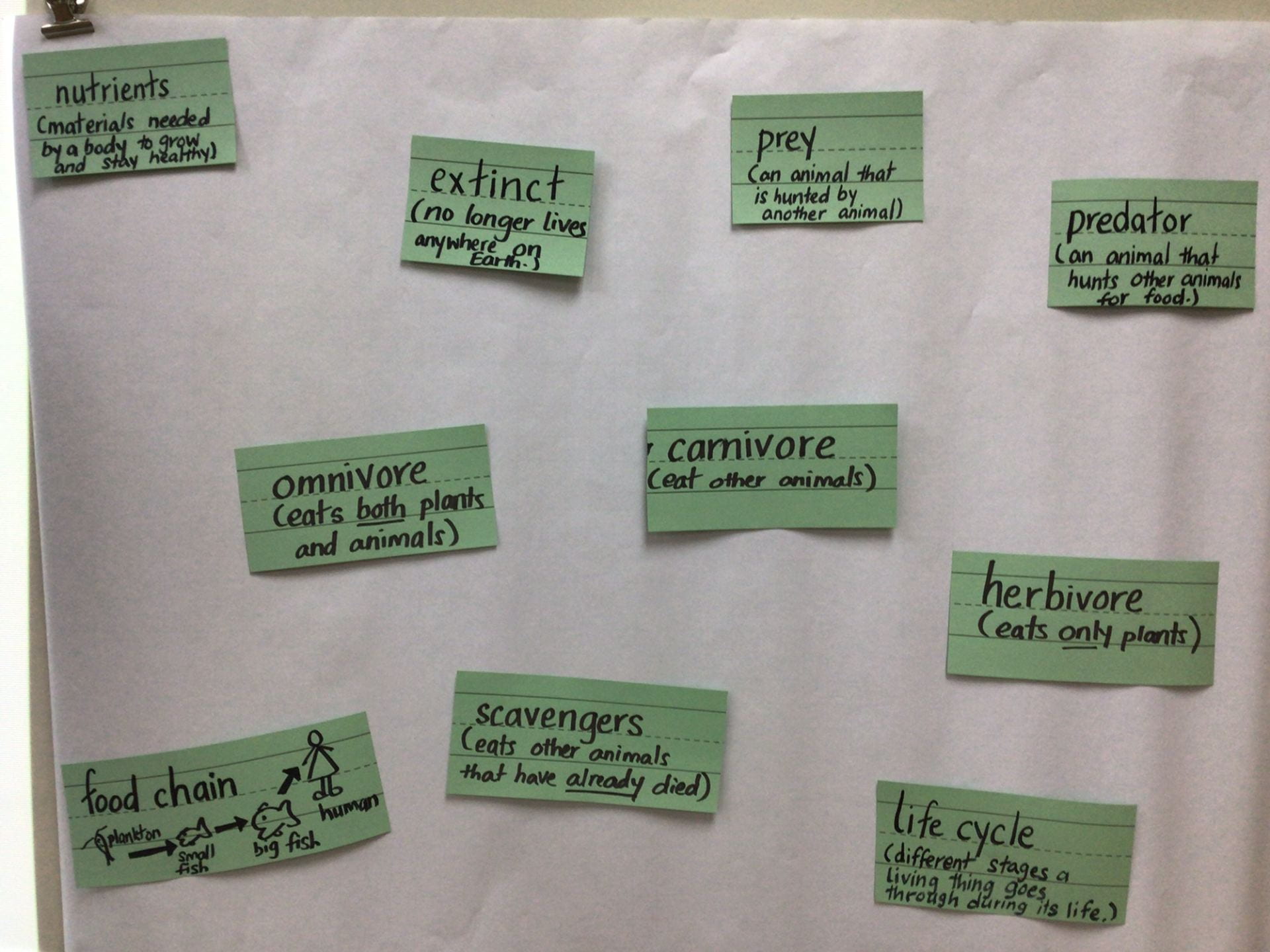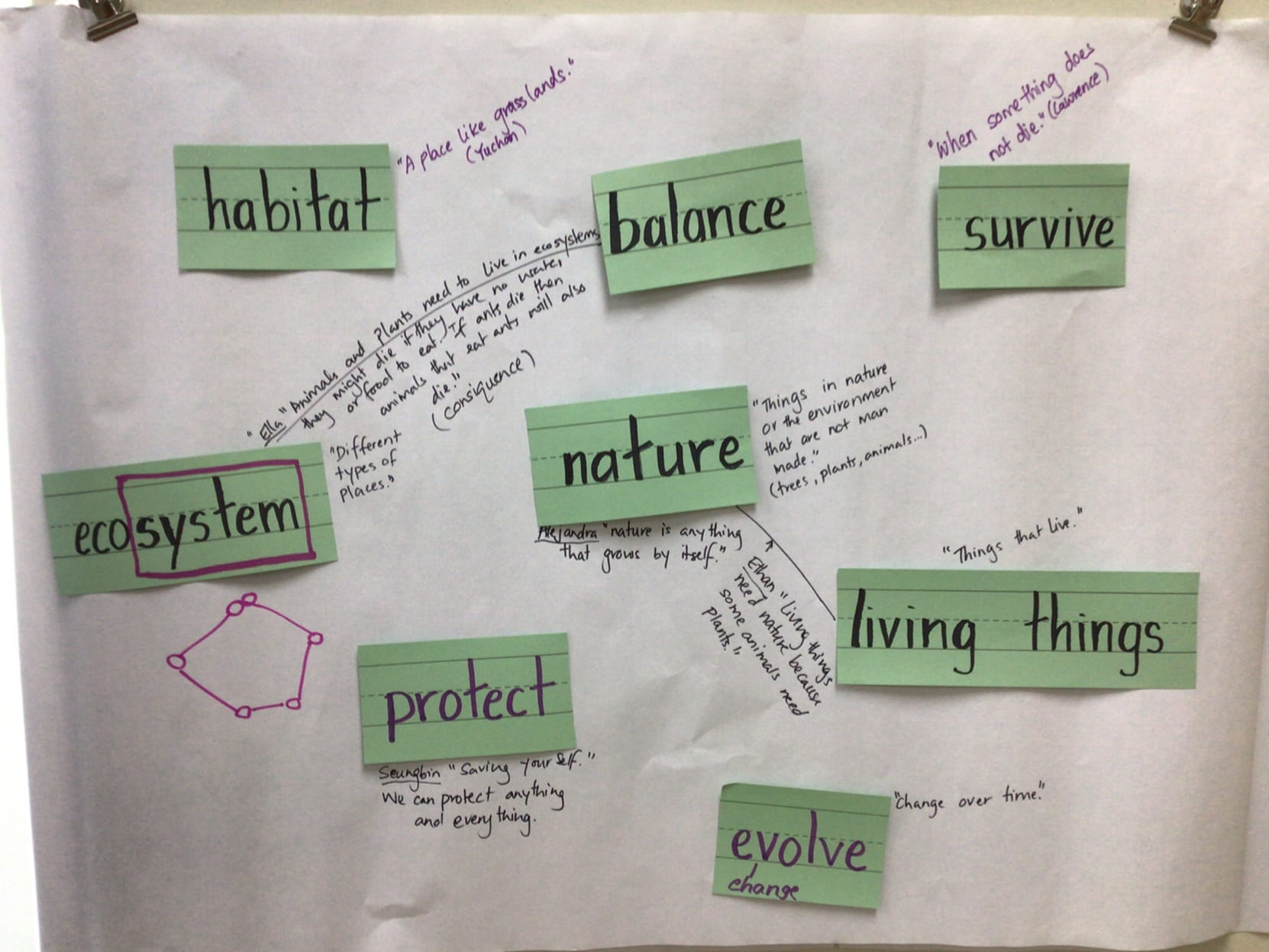Sharing the Planet 2021-22
The Central Idea:
Balance can help living things co-exist.
Lines of Inquiry
- Interdependency of living things
- Balance in nature
- Our role in creating environmental balance
Key Concepts:
Form, Connection
Story#1
Feed the Dingo!
The students were introduced to the game ‘Feed the Dingo’, a desert ecosystem game.
First, the students played the game individually. Then, they gathered to talk about what they noticed. A few students explained that they had introduced the Dingo on the 1st day of the game (the game runs for 12 days (game days).
- Lawrence “I put all the little animals in the first day and then put the Dingo in.”
- Grace “My ants always died and some animals that eat ants were all not happy.”
- Alejandra “One ant could just eat for 2 days.”
- Ethan “You can just put plants and then they won’t die.”
- Ella “It’s like feeding the animals and making food chains. Eagle eats the snake; snake eats the frog and another things eat them. The food chain, I read this in a book, there was an island with plants. Too many plants and then they put some deer and the deer eats too many plants and then too many are gone and they put some wolves and they ate some of the deer.”
- Grace “I put some ants and why are they all gone the next day.”
- Gihyeon “Maybe they eat trees and ants eat the trees and there.”
The students were introduced to the word ‘ENOUGH’.
- What does this mean in the game?
- What is enough?
- How will it be enough?
Next, the students went off to play the game a second time. This time, they buddied up to work in small groups.
As the game progressed, the students had opportunities to pause and reflect on the game. What can we learn from the game?
- What did we do well and what can we improve/get better at?
- What connections do we see?
- What always happens and what could probably happen in the game?
- How is this connected to my world and the ecosystems I know?
Story#2
Nature Photo Challenge
We went out to explore our surroundings, to look carefully and closely at different living things, and to take photographs of things we found interesting.
 The students were tasked with taking two photographs: a BUG’s Eye View and BIRDS’s Eye View.
The students were tasked with taking two photographs: a BUG’s Eye View and BIRDS’s Eye View.
BUG’s Eye View
BIRDS’s Eye View
When we returned, the students used the thinking routine ‘I see, I think, I wonder’ to document their observations, thinking and questions.
Next, we used string to look for ‘connections’ between the different living things. Making those connections explicit helped the students talk more about what ‘needs’ the different livings things may have.
 Then, the students documented their ideas and questions on chart paper.
Then, the students documented their ideas and questions on chart paper.
We wonder…
…what more we can learn about the different ecosystems around us?
Story#3
Conducting Research
We went on a field visit to observe nature, document what we noticed and ask questions that can be researched. We were curious, thoughtful and responsible inquirers. We collected different samples of interesting living things to bring back with us. We teamed up to talk about what we saw, and created a large mural together!
The students used Venn diagrams to explore connections between the different living things they saw on their field visit.
The students have begun to conduct their research.
Here are a few of their driving questions.
- Alejandra – Why do bamboo leaves change colour?
- Ethan, Lawrence – Why are leaves different colours?
- Yuki – What inside the ground?
- Grace – Why does the mud (soil) change colour?
- Hayoon – Why does the worms poop look like a mountain? What is inside the poop?
- Diego – Why do frogs die?
- Seoyeon – How do plants live in cold places?
- Agata, Ella – Who were the first people in the world?
- Amber – Do all nests look the same? Why are they different?
- Seolah – What do different kinds of fish eat?
- Fedo – Why is soil and water important to leaves?
- Gihyeon – How do plants live in the lake?
- Hyun See – Why do plants need water to grow?
- Yuchan – What is the first creature in the world?
- Seungbin – Why are the little branches going around the big branches of trees?
Story#4
Balance
The students have been documenting what they already know about ‘balance‘.
Their ideas included:
- using your body: to balance yourself or objects
- using objects such as scales to balance items
- when things are the same size, they may be balanced
- a seesaw
- choosing a range of books from the library shows a balanced choice
- equations can be balanced
- you can make balanced choices with food
- balancing your choices of colours
- friendships: choosing a balanced group to play with (based on nationality and language)
- balance that creates a healthy lifestyle: eating healthy food, getting enough sleep and exercise
Next, each student noted their initial ideas about ‘what living things need to survive‘. We gathered to share these ideas with the class.
Together, we are creating a Unit Word Wall, including all the important vocabulary that we inquire into or might use throughout the unit.
 We are ready to dig deeper, to conduct our own research and learn about the world we live in.
We are ready to dig deeper, to conduct our own research and learn about the world we live in.
 We wonder about ‘balance‘ in nature and the impact of our actions on the environment.
We wonder about ‘balance‘ in nature and the impact of our actions on the environment.
Story#5
Observing, Listening, Thinking and Questioning
How might we document and take note of key ideas?
As we continue with our research to learn more about different ecosystems and the importance of ‘balance’ within a system, we continued to develop our research skills by observing, listening, thinking and questioning.
The students watched a short video and documented key ideas, observations and questions.
How might what I hear and see help me with my own research?
Story#6
Living Things and Ecosystems
- How might we conduct our own research to develop and share our theories about the world?
- How might we explore the interconnectedness of living things and the integral role we play in maintaining balance?
- What action can we take as a result of our learning?
The students have approached and engaged in their research in many different ways. We noticed that some students dived right in, deciding on the living things they were eager to learn more about while a few students observed others engaged in research before deciding on how they might approach their own learning.
The students watched videos, read books and engaged in conversations with other children and adults to learn more about their chosen project (living thing). The students have been taking notes and then making plans on how they might share their learning with others. They used large paper to document their thoughts, questions and possible direction. Their notes included key information, drawings, facts and sketches that directed their next steps. They highlighted key unit vocabulary as they documented big ideas.
- A “I didn’t know that some sharks were from eggs and others were like babies” stated one student.
The children chose to share their learning in two different ways:
- using BookCreator to make their own non-fiction book
- creating a 3Dimentional model (triorama) of a habitat and the different living things that exist in an ecosystem
While engaging in their projects, the students reflected on the following:
- What type of ecosystem would I create?
- What do the different living things in the ecosystem ‘need’ to survive?
- How do they live and grow?
- How can I make sure there is ‘balance’ in my ecosystem?



 We noticed that the students thought deeply about the interconnectedness and impact of the different living things in their project. As they planned, designed and created, the adults pushed their thinking further by asking thoughtful, provoking questions, and giving them feedback and suggestions.
We noticed that the students thought deeply about the interconnectedness and impact of the different living things in their project. As they planned, designed and created, the adults pushed their thinking further by asking thoughtful, provoking questions, and giving them feedback and suggestions.
- How would you make sure…?
- What impact will… have on…?
- Have you considered what might happen if…?
The students paused to reflect on their own learning journey, thinking about the challenges and big ideas they have uncovered through their own research.
We noticed how the students engaged with the different materials and tools. They were thoughtful about the choices they made, seeking to find the most suitable materials and making conscious decisions about the way they present their ideas, to make sure that they can tell a story of living things through their project.
- L “I want to use sticks from the garden to make my trees.”
- A “I can use real sand to show the seashore. And I can use the shells I picked up from San Ya.”
- D “I want to hang my bird up so that it looks like it is flying.”

 Through their work, the students are learning that research involves:
Through their work, the students are learning that research involves:
- asking or designing relevant questions of interest that can be researched
- making plans for finding necessary information
- gathering information from a variety of primary and secondary sources
- using all senses to find and notice relevant details
- recording observations by drawing, note taking, charting, writing statements
- sorting and categorising information
- noticing relationships and patterns
- presenting information in a variety of ways












































